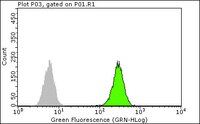Milk-derived tripeptides IPP (Ile-Pro-Pro) and VPP (Val-Pro-Pro) promote adipocyte differentiation and inhibit inflammation in 3T3-F442A cells.
Chakrabarti, S; Wu, J
PloS one
10
e0117492
2015
Show Abstract
Milk derived tripeptides IPP (Ile-Pro-Pro) and VPP (Val-Pro-Pro) have shown promise as anti-hypertensive agents due to their inhibitory effects on angiotensin converting enzyme (ACE). Due to the key inter-related roles of hypertension, chronic inflammation and insulin resistance in the pathogenesis of metabolic syndrome, there is growing interest in investigating established anti-hypertensive agents for their effects on insulin sensitivity and inflammation. In this study, we examined the effects of IPP and VPP on 3T3-F442A murine pre-adipocytes, a widely used model for studying metabolic diseases. We found that both IPP and VPP induced beneficial adipogenic differentiation as manifested by intracellular lipid accumulation, upregulation of peroxisome proliferator-activated receptor gamma (PPARγ) and secretion of the protective lipid hormone adiponectin by these cells. The observed effects were similar to those induced by insulin, suggesting potential benefits in the presence of insulin resistance. IPP and VPP also inhibited cytokine induced pro-inflammatory changes such as reduction in adipokine levels and activation of the nuclear factor kappa B (NF-κB) pathway. Taken together, our findings suggest that IPP and VPP exert insulin-mimetic adipogenic effects and prevent inflammatory changes in adipocytes, which may offer protection against metabolic disease. | 25714093
 |
G-protein coupled receptor 30 (GPR30): a novel regulator of endothelial inflammation.
Chakrabarti, S; Davidge, ST
PloS one
7
e52357
2012
Show Abstract
Estrogen, the female sex hormone, is known to exert anti-inflammatory and anti-atherogenic effects. Traditionally, estrogen effects were believed to be largely mediated through the classical estrogen receptors (ERs). However, there is increasing evidence that G-protein coupled receptor 30 (GPR30), a novel estrogen receptor, can mediate many estrogenic effects on the vasculature. Despite this, the localization and functional significance of GPR30 in the human vascular endothelium remains poorly understood. Given this background, we examined the subcellular location and potential anti-inflammatory roles of GPR30 using human umbilical vein endothelial cells as a model system. Inflammatory changes were induced by treatment with tumor necrosis factor (TNF), a pro-inflammatory cytokine involved in atherogenesis and many other inflammatory conditions. We found that GPR30 was located predominantly in the endothelial cell nuclei. Treatment with the selective GPR30 agonist G-1 partially attenuated the TNF induced upregulation of pro-inflammatory proteins such as intercellular cell adhesion molecule-1 (ICAM-1) and vascular cell adhesion molecule-1 (VCAM-1). This effect was completely abolished by the selective GPR30 antagonist G-15, suggesting that it was indeed mediated in a GPR30 dependent manner. Interestingly, estrogen alone had no effects on TNF-treated endothelium. Concomitant activation of the classical ERs blocked the anti-inflammatory effects of G-1, indicating opposing effects of GPR30 and the classical ERs. Our findings demonstrate that endothelial GPR30 is a novel regulator of the inflammatory response which could be a potential therapeutic target against atherosclerosis and other inflammatory diseases. | 23285008
 |





















